Who held Rhode Island's first low-numbered license plates? 1906 directory has the answers
Rhode Islanders' fascination with low-numbered license plates goes all the way back to 1904, when the General Assembly first began requiring automobile owners to register their cars.
At the time, owning a motor vehicle was a luxury reserved for the elite – and squarely out of reach for most people. But for just 15 cents, you could purchase a pocket-sized directory that made it possible to look up any license plate and find out who was driving.
Simply titled "Who It Is," the guide later became known as the Rhode Island Automobile Directory, and it was published until the 1920s.
Surviving copies are extremely hard to find today, but The Providence Journal recently acquired one from August 1906. Here are some of the highlights.
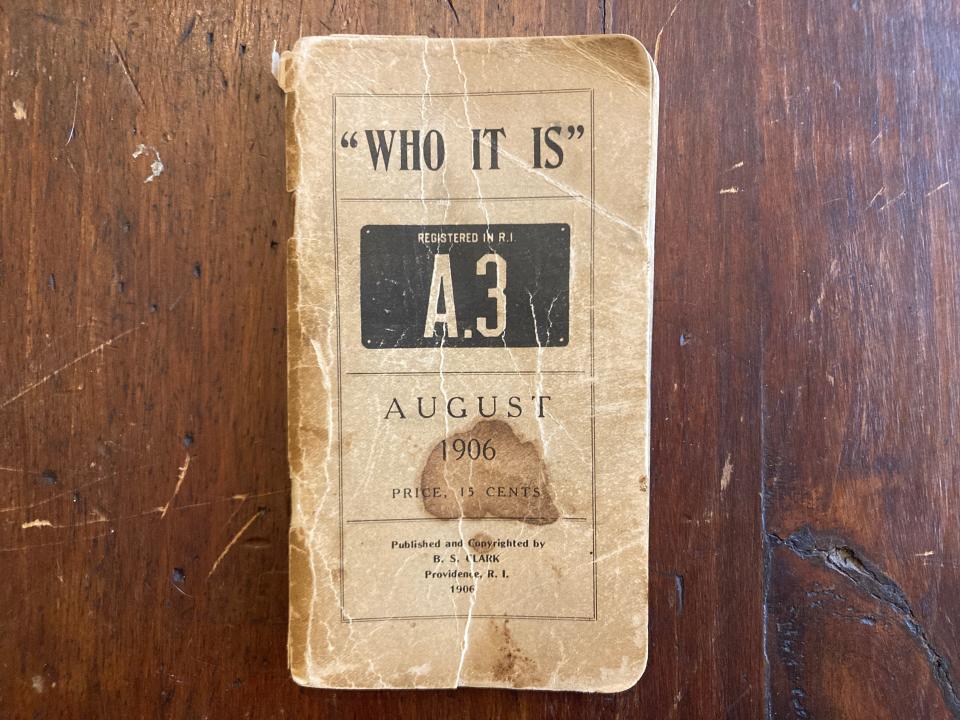
Who got Rhode Island's first 10 license plates?
Back in 1906, all license plates were low-numbered license plates: There were only 1,908 cars registered statewide.
The very lowest numbers weren't necessarily held by the state's most powerful politicians, but rather by other prominent figures such as doctors and businessmen. Here's what we know about the people who had plates one through 10.
Plate No. 1: Rowland R. Robinson, Wakefield
As all local license plate aficionados know, passenger plate No. 1 was assigned not to the governor but to Robinson, a country doctor who was one of the first people in the state with a car. He reportedly got that plate because his brother was a state senator, though the exact details of the story are disputed.
According to one account, Sen. Benjamin Robinson was offered the plate but didn't have a car of his own, so he gave the plate to his brother. Another version of the story holds that the state senator threatened to vote against the auto taxation bill unless his brother got the first plate that was issued.
Plate No. 2: J.C. Tucker, Narragansett Pier
Tucker was a businessman and the owner of the Narragansett Pier Company, according to the Independent. Local histories indicate that he operated a hardware and building supply company and was also responsible for building the Atwood House, a large hotel on Ocean Road that was demolished in the 1960s.
Plate No. 3: Richard S. Howland, Asheville, North Carolina
Howland served as the editor-in-chief of The Providence Journal and Evening Bulletin and later moved to Asheville, where he owned the Asheville Citizen newspaper and got into the railroad business. He also served as a director of Providence's Industrial Trust Company.
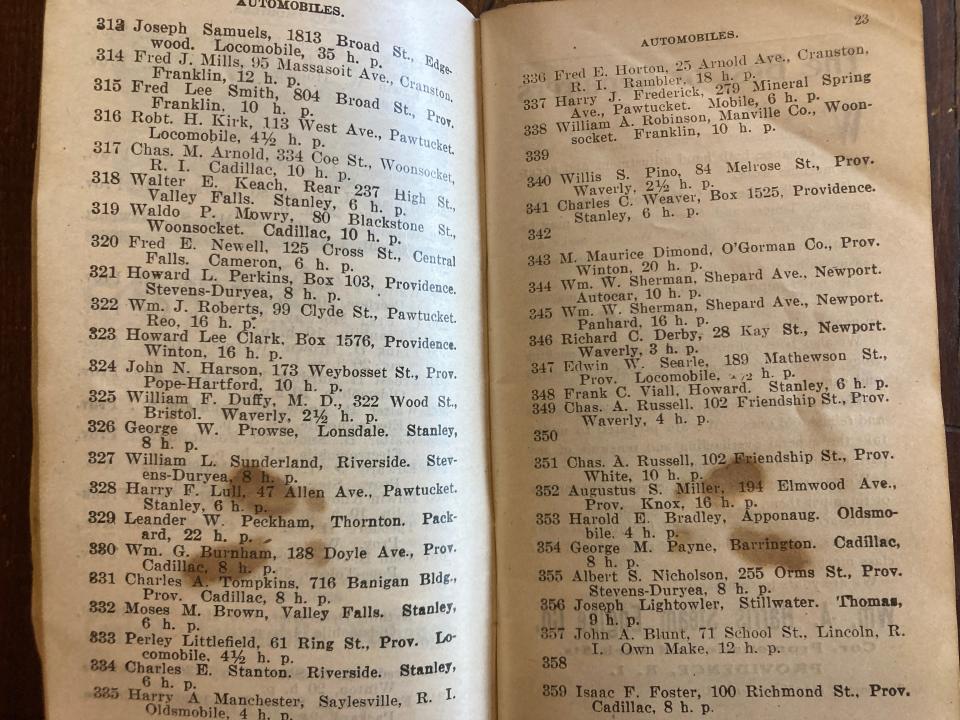
Plate No. 4: J. Fred Gibson, 341 Broadway, Providence
Gibson was a candy manufacturer and owned a chain of drug stores that offered lunch counter service, according to his 1933 obituary. He also served in the Rhode Island House of Representatives as a Republican in 1905 and 1906.
Plates No. 5 and 6: Alvin H. Eccleston, Broad Street, Providence
Eccleston was one of the most prominent surgeons in Rhode Island and a high-ranking Mason, according to his 1910 obituary in the Evening Bulletin. Before moving to Providence, he served on the Richmond Town Council. Tragically, he died after a collision that occurred when he was sitting in his car as it was being towed.
Plate No. 7: Arthur A. Rhodes, 2127 Broad St., Edgewood
Rhodes came from a family whose history in Cranston goes back to the American Revolution. He ran the Rhodes on the Pawtuxet dance hall along with his two brothers. A Republican, he served as mayor of Cranston between 1920 and 1928.
Plate No. 8: Henry A. Carpenter, 272 W. Exchange St., Providence
Carpenter was a director and manager of the General Fire Extinguisher Company and "one of the most widely-known businessmen in Providence," according to his obituary in The Providence Journal. He served on the Providence City Council from 1905 to 1907 and later became president of the Providence Chamber of Commerce.
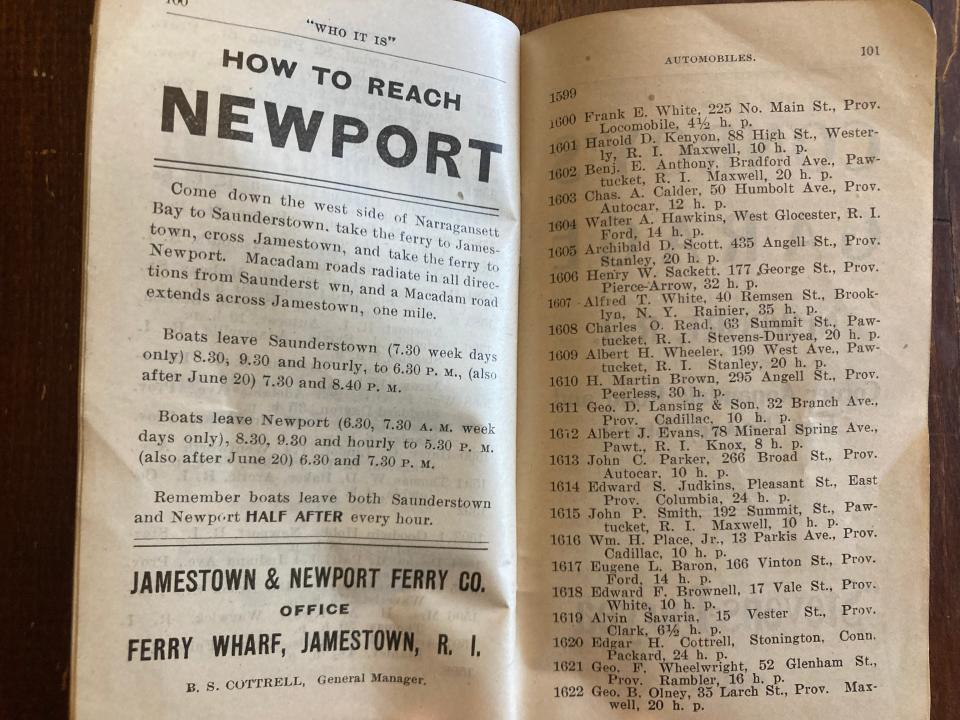
Plate No. 9: Henry O. Potter, 4 South Water St., Providence
Potter was one of the directors of Remington & Sons Cotton Brokers. He ended up giving his plate to his business partner, Edward R. Trowbridge, because he "didn't like to drive those newfangled things," Trowbridge's grandson told The Journal in 1981.
Plate No. 10: Benjamin P. Moulton, Box 1220, Providence
Moulton was Providence's police commissioner from 1914 to 1930 and also served on the City Council. He got the plate because he waited in line and was the 10th person on the first day of car registration, his grandson told The Journal in 1981.
Although the first 10 license plates were all issued to men, some wealthy women did have cars of their own. The first woman who appears in the 1906 directory is Beulah May Nordlinger, who lived at 47 Adelphi Ave. in Providence and drove a Waverly with plate No. 27.
Prominent politicians and Gilded Age heiresses were also among first to register cars
The 1906 automobile directory was dominated by prominent Yankee families. Familiar last names like Tillinghast, Sayles, Hoxie, Burlingame, Metcalf, Olney and Kenyon abound. Joseph Paolino of 138 Knight St. in Providence., who owned a Cadillac with license plate No. 671, is one of the only Italian-Americans listed.
A number of high-ranking politicians were listed in the directory, though they didn't necessarily hold the most coveted plates. Gov. Elisha Dyer Jr. had plate No. 1745, while U.S. Sen. Nelson W. Aldrich had plate No. 1853. Henry F. Lippitt, who succeeded Aldrich in the Senate, had plates No. 23 and 24.
Notable figures from Newport's Gilded Age also make an appearance in the slim volume. Theresa Alice "Tessie" Oehlrichs, an heiress to the Comstock Lode fortune who built Rosecliff, had plate No. 638. Plate No. 1110 belonged to Maude A.K. Wetmore, the heiress, preservationist and prominent Republican who lived at Chateau-sur-Mer.
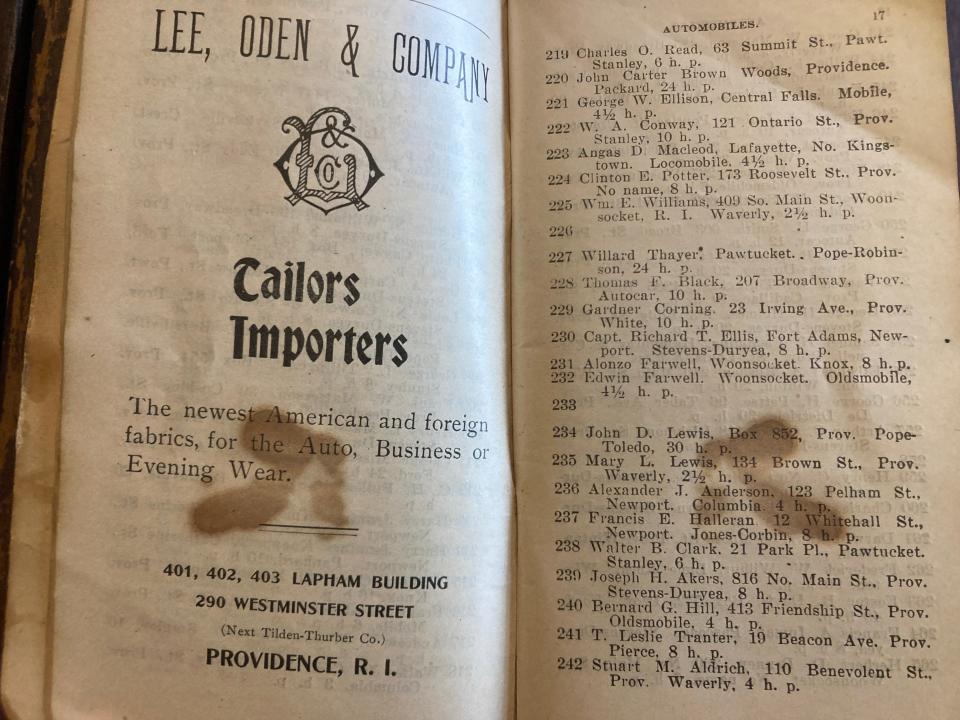
And, unsurprisingly, the pocket-sized directory practically doubled as a "Who's Who" for turn-of-the-century industrialists and factory owners.
Charles J. Davol, the president of the Davol Rubber Company, had plate No. 90. Malcolm G. Chace, a textile mill owner who played a key role in bringing electricity to New England, had plate No. 604. And Samuel P. Colt, who formed the U.S. Rubber Company, had plate No. 1187.
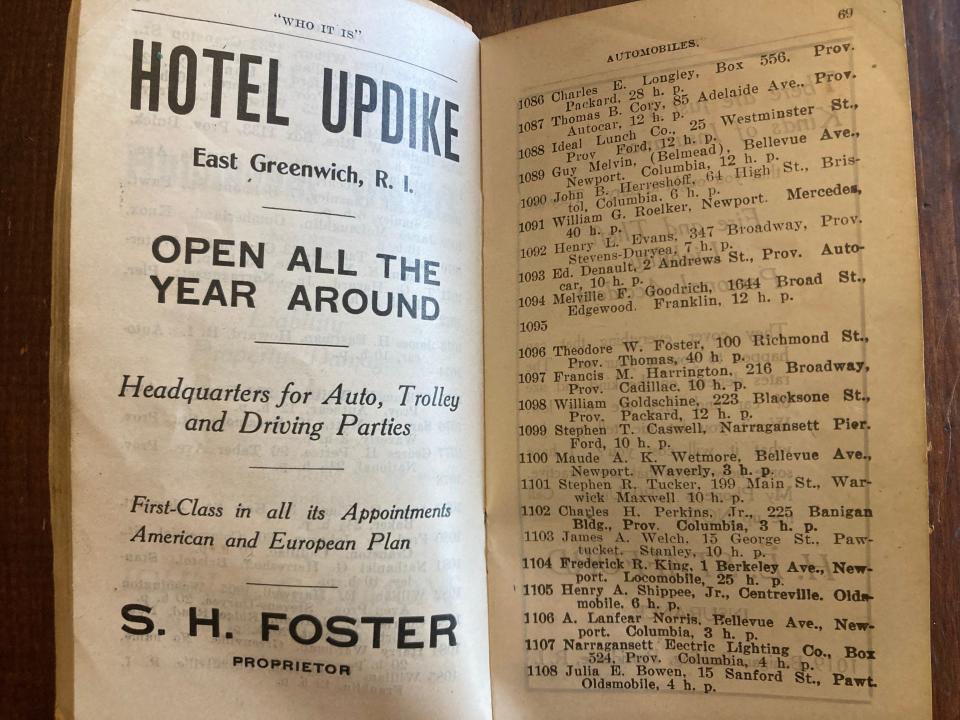
The owners of Bristol's Herreshoff Manufacturing Company registered an unusually large number of cars: Nathanael G. Herreshoff had plates No. 488 and 1081, while John B. Herreshoff had plates No. 489, 490, 910, 1090, 1206 and 1411.
Though they're celebrated today for their elegant sailboat designs, the brothers also built hundreds of steam and power yachts, including torpedo boats for the U.S. Navy, pointed out Evelyn Ansel, a curator at the Herreshoff Marine Museum. They were interested in keeping up with the "latest and greatest" technology, which might explain their fascination with cars.
More: Why do Rhode Islanders love low-numbered license plates? Here's what we found
Why the automobile directory stopped being published, and where you can find a copy today
"Who It Is" was published by Benjamin S. Clark, a secondhand car dealer and early automobile enthusiast who went by B.S. Clark and, in 1901, may have been one of the first people ever arrested for speeding in Rhode Island.
For the first few years after Rhode Island made motor vehicle registration mandatory, Clark's store was the only place to obtain license plates, The Journal reported in 1933. Those plates were issued by the State Board of Public Roads, since the Registry of Motor Vehicles (later the Division of Motor Vehicles) hadn't been created yet.
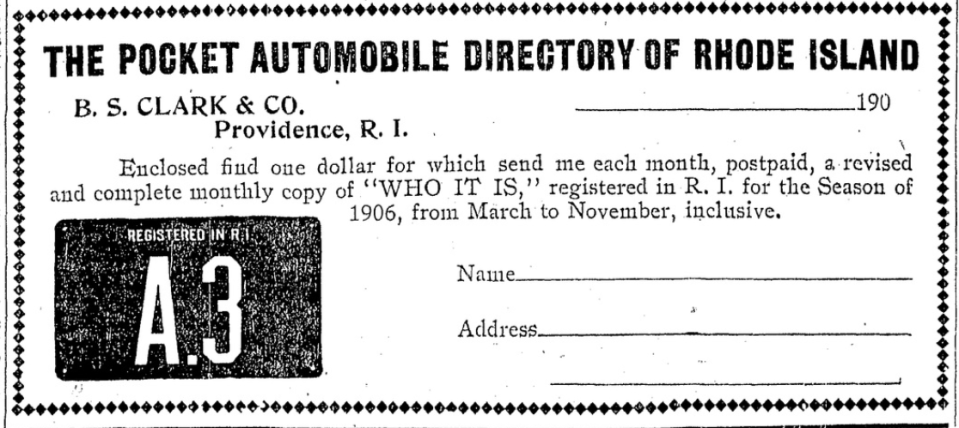
Clark died in 1927, and "Who It Is" appears to have ceased publication after that. By then, there were more than 30,000 cars registered in Rhode Island, so the directory had grown increasingly unwieldy.
Today, it's extremely difficult to get your hands on one – unless you're lucky enough to find one on eBay for $5, like this reporter.
The University of Rhode Island does own an undated copy that appears to be from the 1920s, which has been scanned and made available online at digitalcommons.uri.edu/sc_pubs/35. A copy from 1912 can also be found in the Providence city archives.
Do you have a license plate that's been in your family since 1906? Feel free to contact afarzan@providencejournal.com and we'll look it up for you.
This article originally appeared on The Providence Journal: Low-numbered license plates are coveted in RI now, but who had them first?

